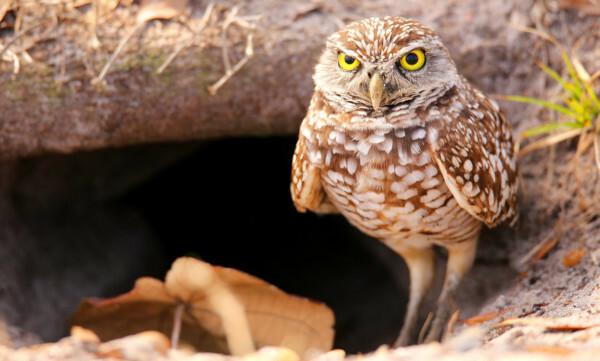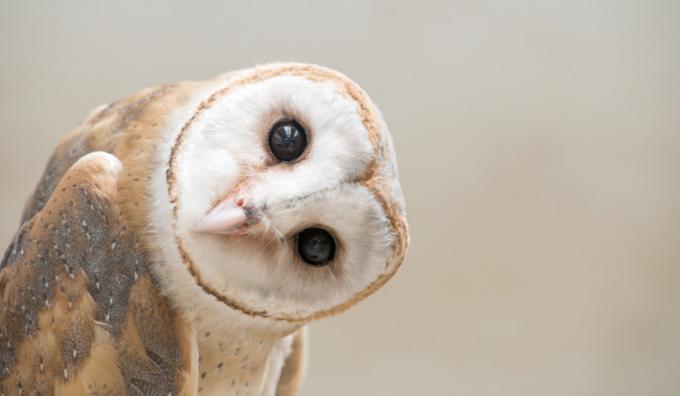owls they are birds which have a large head, flat face, large eyes and a strong, curved beak. They are mostly nocturnal animals and well adapted to live in darkness, being able, for example, to capture their prey even with only the luminosity guaranteed by the Moon. Thanks to their nocturnal habits, owls are also known as "queens of the night".
Owls play a lot with the popular imagination, being recognized in some cultures as symbol of prosperity and wisdom, while in others they are related to bad luck, death and cursed entities. Because association with ill omen, many owls are killed by the population. Therefore, it is important to leave prejudice aside, get to know these amazing animals better and demand conservation policies that ensure the survival of this species and several other animals that are often subject to the harmful action of the men.
Read too:Why aren't all birds birds?
Taxonomic classification of owls
Owls are birds that belong to the Strigiformes order and which are divided into two families: Tytonidae and Strigidae. There are different species of owls, being estimated around
212 distinct species across the planet.brazilian owls

In Brazil there are 22 species of owls, such as the burrowing owl (Athene cunicularia). This species stands out for being a generalist species and for using holes in the ground to shelter and lay its eggs. The holes used by this species are usually made by other animals, such as armadillos. Another peculiar feature of the Burrowing Owl is the fact that be more active during the day, a feature that overturns the myth that every owl has nocturnal habits.
Other species of owls that occur in Brazil are:
striped owl (strix hylophila);
Little eared owl (Otus usta);
wild owl (otus choliba);
southern owl (Otus sanctaecatarinae);
black-throated owl (Pulsatrix Perspicillata ).
It is worth noting that some species are endemic to Brazil, taking place, therefore, only in our country. One of these species is the toad owl (atricapilla megascops), which is endemic to the domain of Atlantic forest.
General characteristics of owls
Owls are a group of birds that have some peculiar characteristics, such as flat face, forward-facing eyes and strong, curved beak. They are animals that have a wide range of size, with small species, around 60 g, and others that can weigh up to 1 kg. The color of the feathers varies from one species to another, but most have feathers brown, white or gray. Owls are found in different parts of the world, including Brazil, where they are distributed throughout the world. biomes.

Owls are animals that have a very keen eyesight. Its vision is binocular, its eyes are fixed, but its head can rotate up to 270º, which guarantees a great increase in vision. These animals are not able to see in a place with total absence of light, but they have good vision during the day and night. Good night vision is important for the survival of these animals, as owls are mostly nocturnal. It is during the night that most of them capture their prey, which includes, for example, rodents and marsupials.
In addition to good eyesight, owls are animals that also have a very developed hearing. They are capable of capturing noises over long distances, such as the sound of their prey moving through soil and vegetation. This sense, combined with good eyesight, makes owls excellent predators.
Owls are flying birds and stand out for having a very silent flightjealous. The noise of the flapping of the wings is reduced due to the fact that these animals have a soft plumage. The owls' silent flight allows them to be unnoticed by their prey.
Owl feeding
owls are carnivorous animals, that is, they feed on other animals. Owls' diet varies according to the species studied. Some species feed on fish; others, from rodents; others of insects; and some even eat other birds. In general, the Owls' main prey are rodents and insects..
To capture prey, owls rely on claws that have strong nails and resistant, curved beaks. Owls often swallow their prey whole and regurgitate what cannot be digested, such as feathers, fur, bones and scales.

Owl reproduction
The owl's reproduction period varies according to the region where a species lives. In the tropics, for example, the breeding season can occur throughout the year, especially at the end of the dry season. In Brazil, the breeding period of these birds begins with spring.
the owls attract their partners through corners and calls. Males can also offer prey as gifts to females in an attempt to win them over. Couples formed during the breeding season can be maintained for several seasons or even for a lifetime. Some species, however, change partners every year.
At Owls are animals that do not build nests. They lay their eggs, for example, in depressions in the ground, in trunks and in the nests of other animals. These birds lay an average of two to three eggs, which are laid every few days. The eggs are incubated by the female, who is fed by the male during this period.
During the reproductive period, the owls defend their nest, giving low flights to those who approach and also emitting sounds. After birth, only the female covers and feeds the young, however, over time, the male also takes care of the young.
Read too: Kiwi, a bird from New Zealand
Threats to owls
Owls, like many species, are threatened by destructive action of man, which pollutes and deforests large areas, destroying the habitat of these animals. We must also mention that many of these birds are killed due to being run over, shocked. electrical, wire accidents, among other causes that are directly related to the action human. In addition, many people believe in legends that owls are animals that attract death and bad luck, which causes many individuals to be sacrificed by the population.



